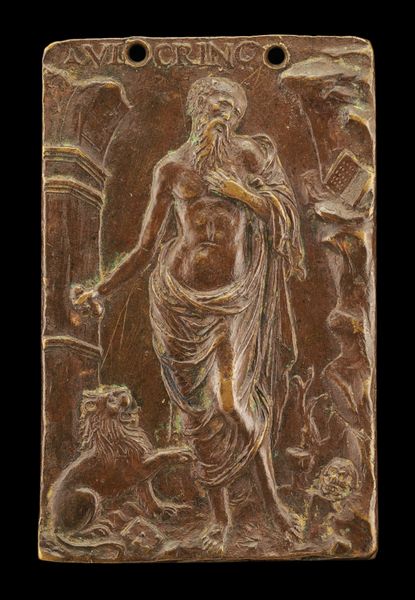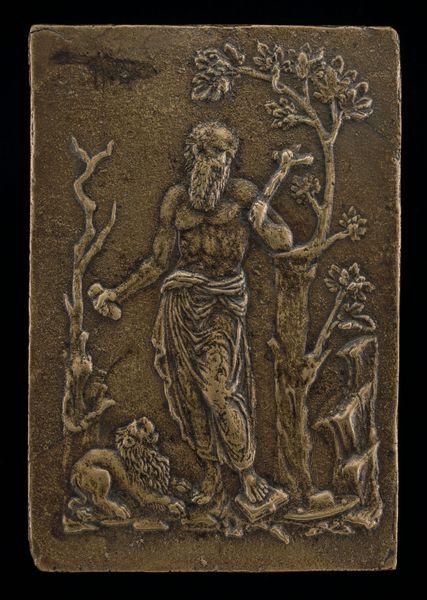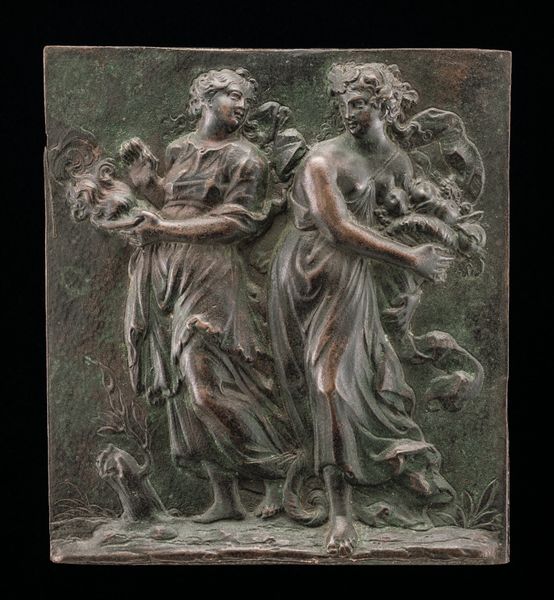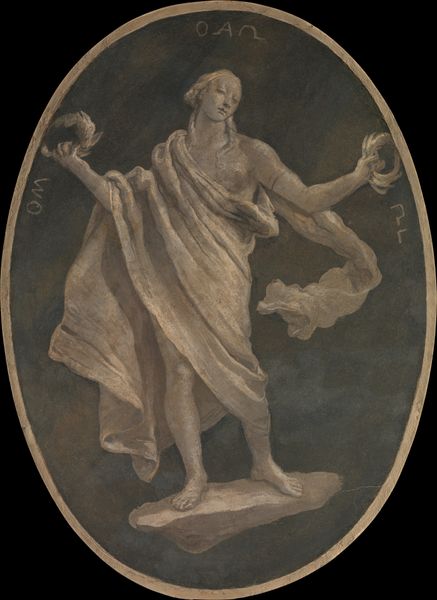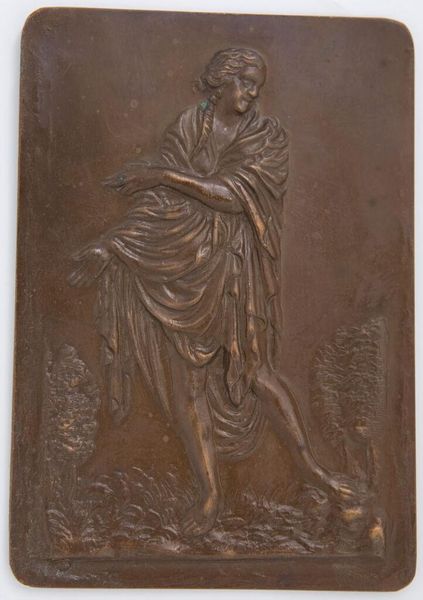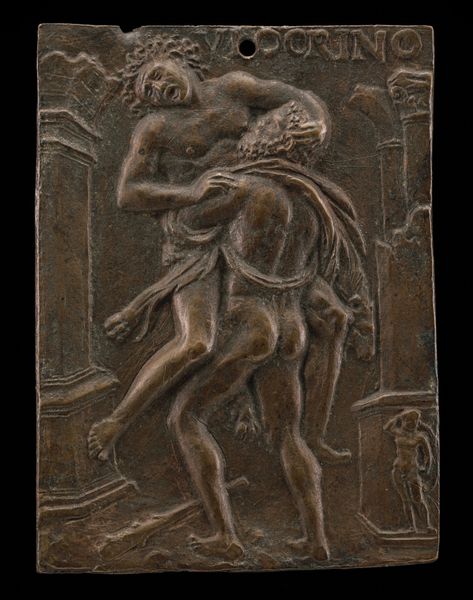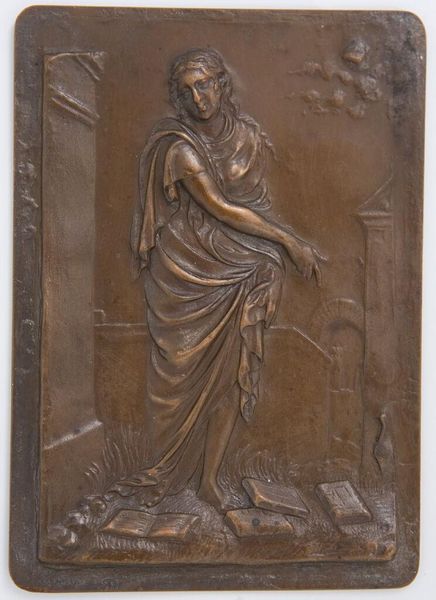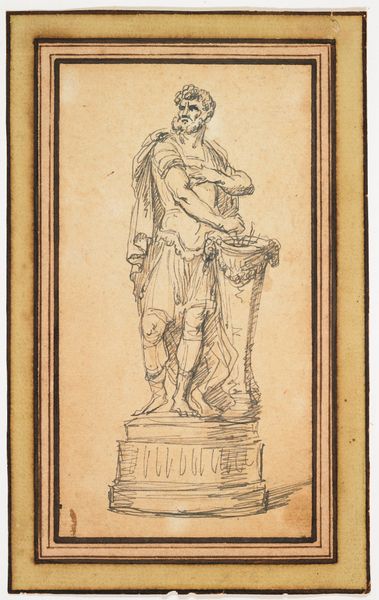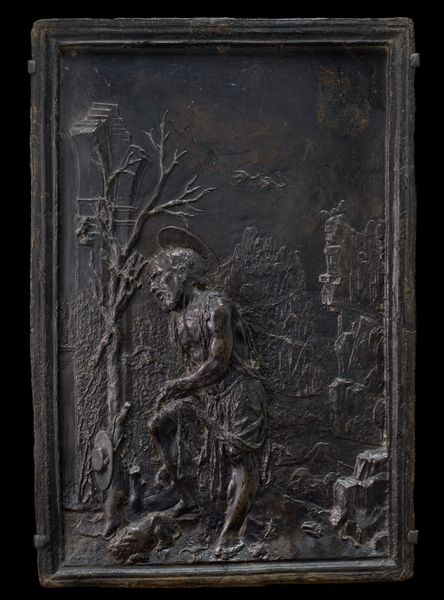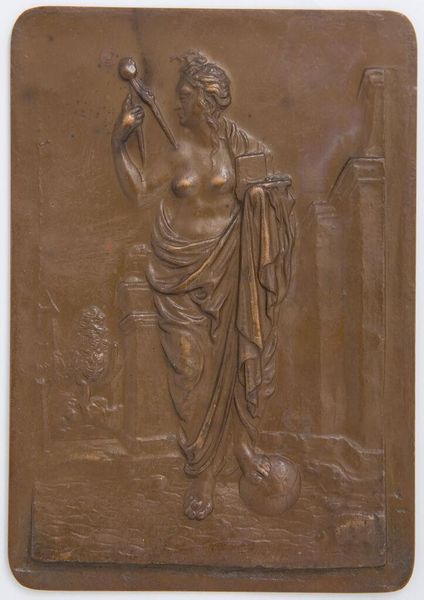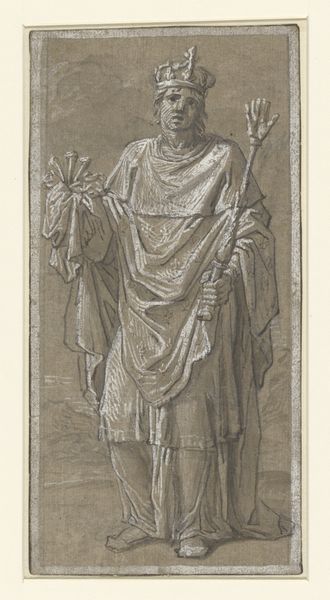
tempera, relief, bronze, sculpture
#
portrait
#
tempera
#
sculpture
#
relief
#
bronze
#
figuration
#
sculpture
#
history-painting
#
italian-renaissance
Dimensions: overall: 7.4 x 5 cm (2 15/16 x 1 15/16 in.) gross weight: 55 gr
Copyright: National Gallery of Art: CC0 1.0
Peter Flötner created this bronze plaquette, titled "Thalia," sometime in the first half of the 16th century. Flötner, active in Nuremberg, Germany, worked in a period of immense social and religious upheaval. The Protestant Reformation challenged the authority of the Catholic Church, and artists began exploring new themes beyond traditional religious subjects. Here, Thalia, the Greek muse of comedy and idyllic poetry, embodies this shift towards classical antiquity and secular themes. Consider the political and intellectual climate of the Reformation. Nuremberg, a center of humanist scholarship and printing, was also a hotbed of reformist ideas. Artists like Flötner, trained in traditional workshops, were increasingly exposed to new ideas about the relationship between art, religion, and society. This bronze functions as a tangible object manifesting the shift in cultural values during the period. To understand this work better, we can consult contemporary literature, religious pamphlets, and workshop records. Art history reminds us that the meaning of art is always shaped by its specific social and institutional contexts.
Comments
No comments
Be the first to comment and join the conversation on the ultimate creative platform.
